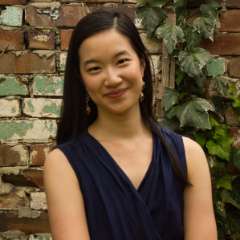As far as opera goes, The Marriage of Figaro is heavenly stuff and a perennial delight. And the experience becomes fun indeed with this revival (directed by Andy Morton) of the Sir David McVicar and Jenny Tiramani production.
At first blush, this Figaro is devoid of clever modernist interpretations. In fact, we overshoot a little in the opposite direction, with our hero’s action-packed wedding day taking place in a pre-Mozart, pre-Beaumarchais 17th century. Tiramani has gone to great lengths to create beautiful period-authentic costumes for this production, with the servants in deep cornflower blue and the aristocrats in stunning silks. They all inhabit a gorgeous chateau (also Tiramani) of lofty ceilings, sunny arched windows (David Finn’s very effective lighting design), and a pastel colour palette that would make Laura Ashley weep with envy.
But striking interior designs do not a happy household make, and audiences should not be fooled by the seemingly innocuous traditional setting of the chateau. The drama – when it came – was pretty fabulous and felt deeply relatable. McVicar, in a coup of inspired theatrical direction, has peopled the chateau with a hot mess of human relationships and injustices. Upstairs-downstairs tensions are rife, behind every door lurks an eavesdropping servant, the gardener Antonio (Andrew Moran) won’t wipe his shoes and the Count (Andrei Bondarenko) billows down the corridors – long hair, nightgown, and aristocratic power streaming behind him – in pursuit of his next female victim, pausing only now and then to grope a servant or two.
It helps that the ensemble casting is strong. Our high-spirited Figaro is the charismatic Paolo Bordogna, blustering with hot-headed flamboyance and comic flare. His effortless bass-baritone was full of both relatable warmth and live-wire emotional volatility. There was complexity in his Act 1 bravado, which showed undertones of insecurity that crack open, culminating in Act 4’s jealous musket-pointing rage.
Bordogna had wonderful chemistry with the up-and-coming young soprano Stacey Alleaume, making her role debut as Susanna. Alleaume was sunshine as Susanna – her acting was a joy, as was her voice which began with a spirited gentleness in Act 1 (occasionally outdone by Bordogna’s heft), growing in fullness as the opera progressed until it reached the emotionally soaring heights of Act 4’s “Deh vieni non tardar”.
The moments of gorgeous female singing, though, were not limited to Alleaume. Ekaterina Sadovnikova sang the Countess with remarkable clarity and assurance in line and phrasing. Her Countess had a patient poise – a wonderful contrast to Alleaume’s light-footed Susanna – creating a touching depiction of a dignified woman struggling under the weight of her husband’s infidelity.
Which brings us to Bondarenko as the predatory Count. His nuanced acting and powerful stage presence were major reasons why this Figaro could feel so uncomfortably relevant and compelling despite its 17th-century setting, and why it has such wide dramatic scope. I shuddered with real horror when, in Act 1, he pushed Susanna onto the bed, making the sunny comedy turn dark in a flash. It all seemed too real. This was no slapstick stage routine (as it can be reduced to in some productions) but a chilling abuse of power. Musically, Bondarenko was equally magnetic, with his Act 3 “Hai gia vinta la causa” a particularly superb moment of the entire opera.
Then there was Anna Dowsley as the lank-haired, hormonal Cherubino. She was a clear winner with the audience, with a mezzo-soprano voice of very satisfying richness and beautiful dynamic control in “Voi che sapete”. Special mention goes to Dominica Matthews and Richard Anderson as the deliciously puritanical Marcellina and Bartolo, and Kate Amos as a beautifully-voiced and (for a smaller part) intriguingly-realised Barbarina.
The orchestra was enthusiastically led by Guillaume Tourniaire, moving through Mozart’s orchestration with vitality and surprising briskness. That vitality is one of the reasons why The Marriage of Figaro is such a jewel of the operatic canon. This production – with its visual beauty, wit, colour, and spotlight on human relationships – makes it light up afresh.




